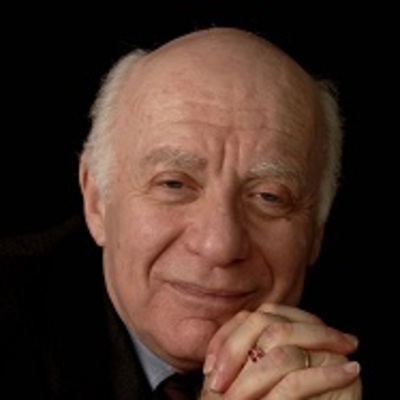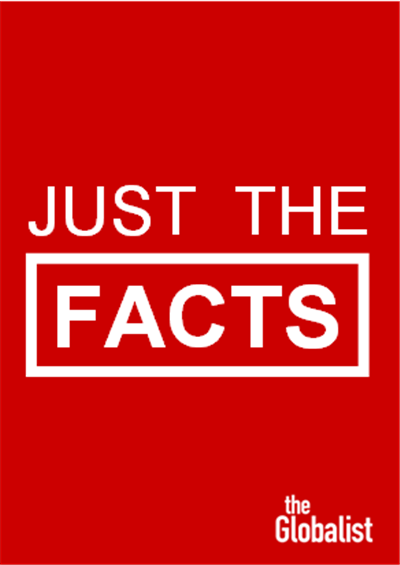US Inequality: The Economics of Nastiness
Americans are systematically lulled into believing that inequality is an unalterable fact of life.
November 11, 2017
For all the mystery that currently surrounds the issue of inequality, at least in the United States neither the reality nor the cure is as mysterious as commonly made out to be.
A few facts: Inequality of income in the United States began to widen in the early 1970s. That is to say, 35 years before the much blamed robotic/IT so-called revolution as well as globalization ever showed their full force.
The pace of inequality accelerated beginning with the Reagan years, followed by Clinton’s deregulation move, as well as the bubbles of the past 20 years.
Since 1973, more than 90% of the increase in U.S. GDP has gone to the top 4% of the U.S. population. If distribution rates among income levels had been constant since 1973, roughly $3 trillion dollars of income among the top 10% (the majority going to the top 1%) would be in the pockets of the other 90%.
Or it would be in the coffers of the U.S. Treasury. There, it could have been used to build infrastructure, pay for a national health care program, provide subsidies for college tuition, child care services or decent accommodations for the aged.
Under-taxing the wealthy
That present political and economic U.S. malaise derives in large part from the under-taxation of the wealthy and corporations.
While the rich have perfected the art of tax evasion with the passive acquiescence of government authorities in Washington, America’s salaried workers overall have experienced either near stagnation or an actual drop in real disposable income.
And the politically condoned economics of nastiness continue. Now, even the venerable Federal Reserve can no longer close its eyes to the facts. In its September 2017 Federal Reserve Bulletin, the Fed staff informs us on page 10 that “The distribution of income and wealth has grown increasingly unequal in recent years.”
According to statistics from the Survey of Consumer Finances (SCF), “Families at the top of the income distribution saw larger gains in income between 2013 and 2016 than other families, consistent with widening income inequality.”
Specifically, the share of income of the top 1% went up from 20.27% in 2013 to 23.80% in 2016. The share of those in the bottom 90% declined from 52.73% in 2013 to 49.69% in 2016. That’s a direct percentage point for percentage point transfer from the lower ninety to the top 1%.
Eroding job security
These numbers do not include the sharp erosion in job security and accompanying personal anguish, nor the reduced health and retirement benefits as well as deteriorated working conditions for most salaried persons.
The latter add to the social and environment factors that, in the world’s self-ascribed richest country on earth, have produced a lowering of life expectancy unprecedented since reliable statistics have been kept.
The numbers speak for themselves – or SHOULD speak for themselves. Yet, a very large majority of economists deny the compelling truths that they reveal.
Instead, quasi-mythic elements are substituted. The most pervasive, foundational myth is the claim that there are “objective” factors at work generating powerful, perhaps irresistible pressures toward inequality.
“Objective” refers to factors beyond the direct control of state authorities. We get read and hear this litany in U.S. media every day. It comes as relentless variations of a theme that first topped the charts when played by Thomas Friedman 20 years ago.
Fittingly enough, Friedman himself is the son-in-law of a billionaire real estate investor. At least, he’s no pied piper, as the Clintons and Obamas are.
Four horsemnn of the inequality apocalypse
Americans can hardly pick up a paper, a journal, a book or a scholarly conference paper without noting reference to robotization, globalization, functional specialization and STEM education – the four horsemen of the inequality apocalypse.
In this telling, cars will drive themselves, our children taught by corporate produced computer programs, our eggs dropped on our driveways by drones, our ailments diagnosed on the web and treated as dictated by data banks, etc., etc.
A coterie of high-tech magicians will create and maintain these electronic masters and will be the only ones consistently employed gainfully. The rest of us will compete for gigs to serve as McDonald’s sweepers and COSTCO greeters with clickers in hand, evidently to replace the current wave of impoverished retirees that are now handling these tasks.
Low public spending breeds inequality
What is left unsaid is that inequality is strongly correlated with low public revenues and low public spending. There are crystal-clear macro-economic linkages, philosophical linkages and political linkages.
It is no accident that it is the United States and Great Britain where the population at large now feels especially down and out. Decades-long, stringent controls on government spending for everything but the military and intelligence services generates additional pressures on working families that lower the value of their household incomes.
The great paradox is that this should be blatantly obvious to many, if not most Americans. But even upper middle-class Americans shy away from recognizing the truth – even as it stares them in the eye.
Instead, they are happy to borrow money in order to pay for university tuition as approved by Equifax (mind you, for tuition charged by state universities that were abandoned by their own state legislatures).
They also rush their kids to the ER for overdosing on opiates, provide room and board for a 31 year old son (a certified graphic designer) whose job was outsourced to India or given to a pliable H-4 immigrant at the insistence of Bill Gates and Zuck.
They also silently endure supporting millions of prisoners, overwhelmingly from the lowest income brackets, that are kept in for-profit prisons (and that at a cost greater what is spent on American higher education).
Funding the military/intelligence complex
Never mind that they also fund a military/intelligence complex to the tune of $1 trillion annually to secure – unsuccessfully – them from everything except their free-floating anxieties.
This phenomenon is charitably called “cognitive dissonance.” It points to a level of falsehood in U.S. public policy that is nothing short of an organized crime.
Unfortunately, Americans – despite their falsely stated, supposed “revolutionary” beginnings – are an obedient bunch. They just suck up what their ruler tells them to believe.
The fact that, in the United States, it is not one ruler, but rather an amorphous group of plutocrats does not make the cowardly failure of Americans at large to stand up for their own economic interests any more tolerable.
Conclusions
It should not take much for a people to understand the following as logical conclusions of the way things presently are in the United States:
1. It is public policies and the structural features of an economy they shape that are the prime determinants of inequality.
2. The United States, on this score, is out-of-step with nearly all of the developed world.
3. The answers to American inequality are to be found in its politics, its social philosophy and its culture. These are not immutable – as witnessed by the relatively recent regression from quite different government roles and outcomes in the period between 1933 and 1973.
4. The difference in GINI scores between the United States and Sweden is 19%. Those numbers tell us that if we had the same score as Sweden, roughly $3 trillion would have been transferred from the upper brackets to the middle and lower brackets.
Does that spell disaster – or, as it has been cast, in the United States, “socialism”? Anybody who does so declares fairness toward the middle(!) class as an act of socialism!
The fact that Swedes across the board do quite well compared to most Americans is another conveniently oppressed truth. Or, to paraphrase the insufferable Larry Summers, a paid piper of the billionaire class, this is an outcome that doesn’t follow from the law of economics, but the facts that the Swedes are all so “Swedish.”
Takeaways
Income inequality in the US began to widen in the 1970s -- 35 years before the much blamed robotic/IT so-called revolution and globalization ever showed their full force.
While the rich have perfected tax evasion with the acquiescence of Washington, America’s salaried workers have experienced stagnation or an actual drop in disposable income.
Since 1973, more than 90% of the increase in US GDP has gone to the top 4% of the US population.
In the US, the share of income of the top 1% went up from 20.27% in 2013 to 23.80% in 2016.
Unfortunately, Americans – despite their supposed “revolutionary” beginnings – are an obedient bunch. They just suck up what their ruler tells them to believe.

